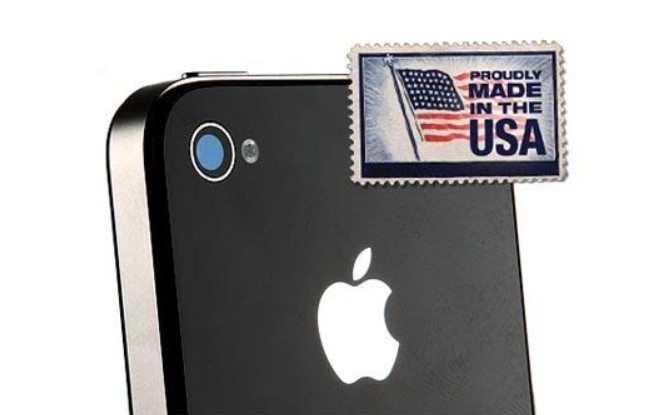Top 10 Best-Selling Smartphones In The World: iPhone, Samsung Galaxy and Xiaomi Redmi
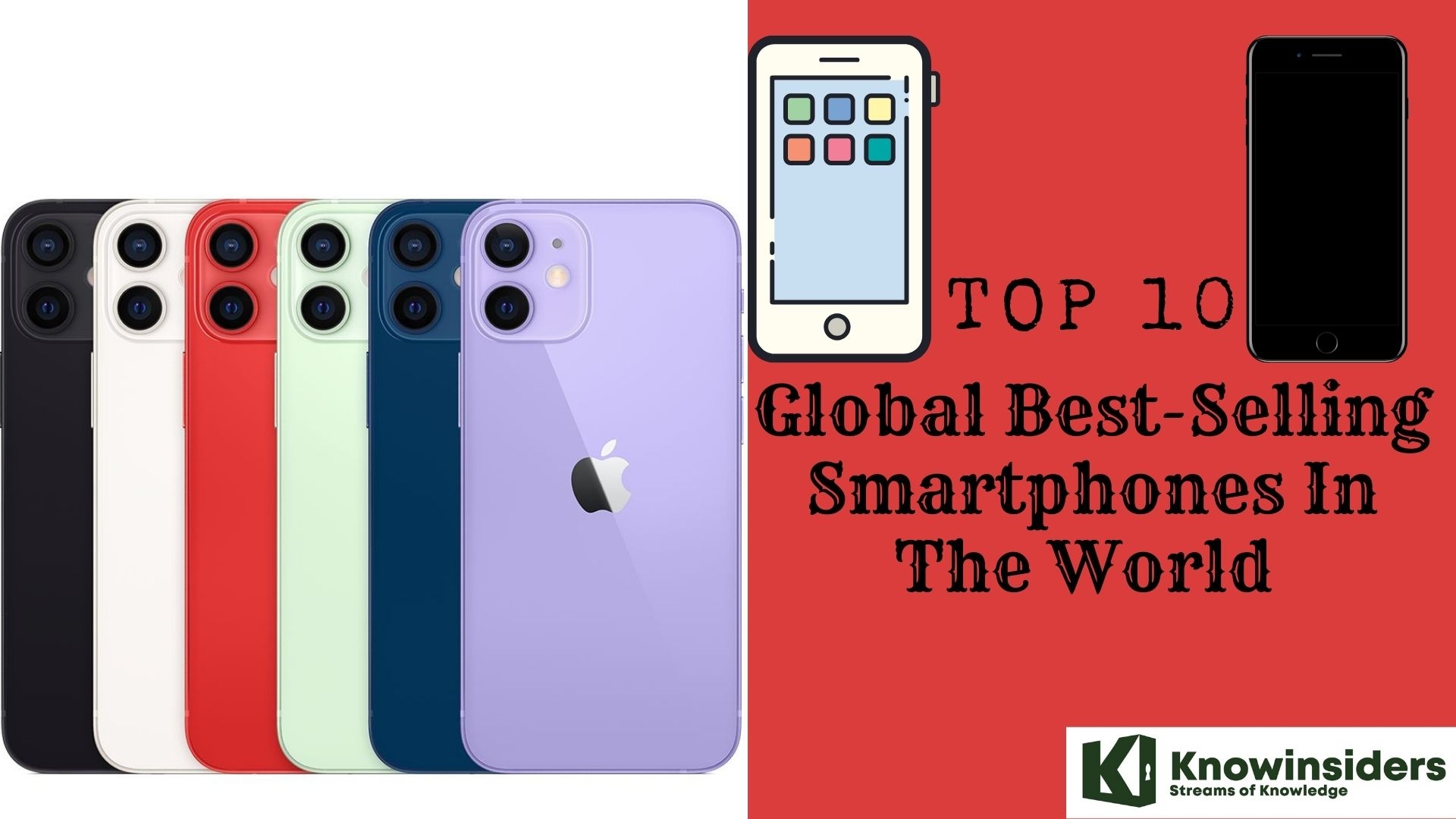 |
| Top 10 Global Best-Selling Smartphones In The World |
Apple, Samsung and Xiaomi are the only brands whose smartphones made it to the top-10 list of those sold in 2021. According to a report from Counterpoint Research, iPhones had a spectacular year, and secured seven spots in the list --- its highest ever. What more, the top five were all swept by Apple iPhones.
The Chinese brand Xiaomi captured two spots in the top-10, while the Korean tech Samsung got itself a single spot. In all, there were more than 4,200 active smartphone models in the global market in 2021.
According to Counterpoint Research’s Global Monthly Handset, Model Sales Tracker–Top 10 Best Selling Smartphones of 2021 – Apple has secured the top 5 places, with 7 devices in the top 10. The iPhone 12 took the pole position, followed by the iPhone 12 Pro Max, iPhone 13, iPhone 12 Pro, and iPhone 11. Counterpoint notes that “The pending demand for 5G upgrades by a strong and loyal iOS user base and push from carriers led the iPhone 12 series volumes. Besides, the delayed launch of the iPhone 12 series shifted some holiday season demand to the initial months of 2021.” iPhone 13 has been performing well and was the best-selling model in Q4 of 2021. iPhone 12, iPhone 12 Pro Max, and iPhone 13 contributed 41% to Apple’s total sales.
List of top 10 global best-selling smartphones in the world
1.Apple iPhone 12
2.Apple iPhone 12 Pro Max
3.Apple iPhone 13
4.Apple iPhone 12 Pro
5.Apple iPhone 11
6.Samsung Galaxy A12
7.Xiaomi Redmi 9A
8.Apple iPhone SE 2020
9.Apple iPhone 13 Pro Max
10. Xiaomi Redmi 9
*****
What are the global best-selling smartphones 2022?
1. Apple iPhone 12
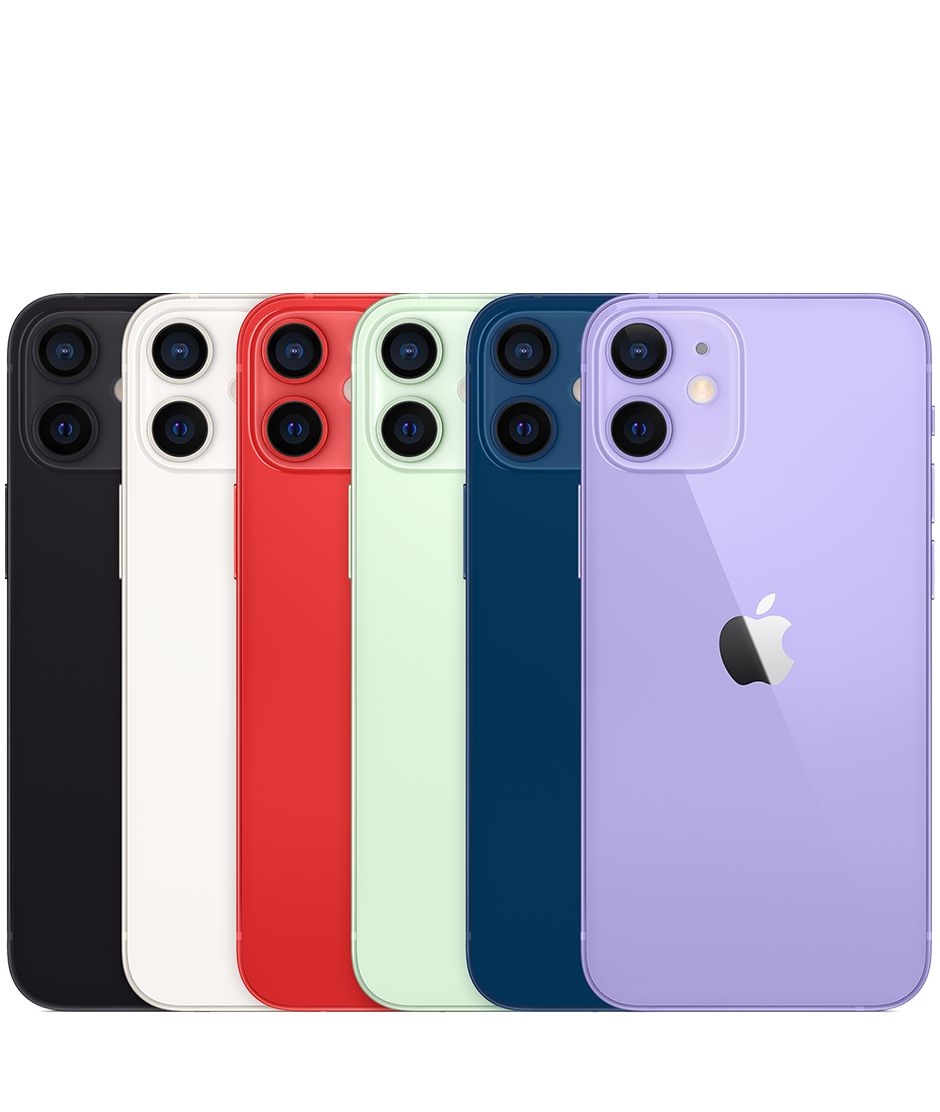 |
| Photo: Apple |
The iPhone 12 was the best-selling model, followed by the iPhone 12 Pro Max, iPhone 13, iPhone 12 Pro and iPhone 11. The top three models contributed 41% to Apple’s total sales.
"The pending demand for 5G upgrades by a strong and loyal iOS user base and push from carriers led the iPhone 12 series volumes. Besides, the delayed launch of the iPhone 12 series shifted some holiday season demand to the initial months of 2021," Counterpoint pointed out.
The latest iPhone 13 series is performing well with the iPhone 13 becoming the best-selling model in Q4 2021, followed by the iPhone 13 Pro Max and iPhone 13 Pro.
The first non-Apple phone in the list was Samsung’s Galaxy A12, an entry-level smartphone, which took the sixth position.
Almost all regions and countries showed strong demand for the A12 throughout the year. "Samsung’s choice of features for the A12, like good camera setup, big battery size, six memory configurations and longer software support, made the model a value-for-money product that clicked with customers." The Galaxy A13 (5G), its successor, is expected to carry on with the same momentum.
Xiaomi’s Redmi 9A and Redmi 9 entered the list in 2021, contributing 22% to the brand’s total sales. Xiaomi performed well across regions. China, India and Asia-Pacific were its top markets.
The iPhone 12 models were the first to support 5G connectivity for faster downloads and uploads, better quality video streaming, improved gaming, and higher-definition 1080p FaceTime calls. 5G coverage is available worldwide, but only iPhone 12 devices sold in the United States support mmWave 5G, which is the fastest 5G technology available.
iPhone 12 models sold in other countries are limited to the slower but more widely available Sub-6GHz 5G connectivity. In the U.S., 5G speeds can be as high as 4Gbps, even in highly populated areas.
Gigabit LTE is supported when 5G isn't available, and to preserve battery life when using 5G, a Smart Data Mode reverts to an LTE connection when 5G speeds aren't necessary.
The iPhone 12 and 12 mini support WiFi 6 and Bluetooth 5.0, plus they include a U1 Ultra Wideband chip for spatial awareness and interactivity with other devices that include the U1 feature such as the HomePod mini.
There's an A14 chip inside the iPhone 12 models, and it was the first chip in the smartphone industry built on a 5-nanometer process for performance and efficiency improvements. Apple said at launch that the 6-core CPU and 4-core GPU in the A14 were 50 percent faster than the fastest competing smartphone chips, although the A15 chip in the latest iPhone 13 models has pushed things even further. The A14 chip also includes a 16-core Neural Engine that offers an 80 percent increase in performance for machine learning tasks compared to the previous A13 chip.
Unlike the iPhone 13 family which offers both regular and Pro models, the iPhone 12 and 12 mini are no longer have a corresponding set of Pro models, with those having been discontinued in September 2021 with the launch of the iPhone 13 lineup. The regular iPhone 12 and iPhone 13 models are similar to the Pro models in most respects, but the camera is a major differentiating factor. While the Pro models include a triple-lens camera setup with a LiDAR Scanner and other bells and whistles, the iPhone 12 and 12 mini have a simpler and less advanced dual-lens camera setup.
That said, there are still significant camera improvements in the new iPhone 12 models compared to the iPhone 11. There's an ƒ/2.4 Ultra Wide camera and a Wide camera that has an ƒ/1.6 aperture that lets in 27 percent more light for better performance in low-light conditions along with 2x optical zoom and 5x digital zoom.
2. Apple iPhone 12 Pro Max
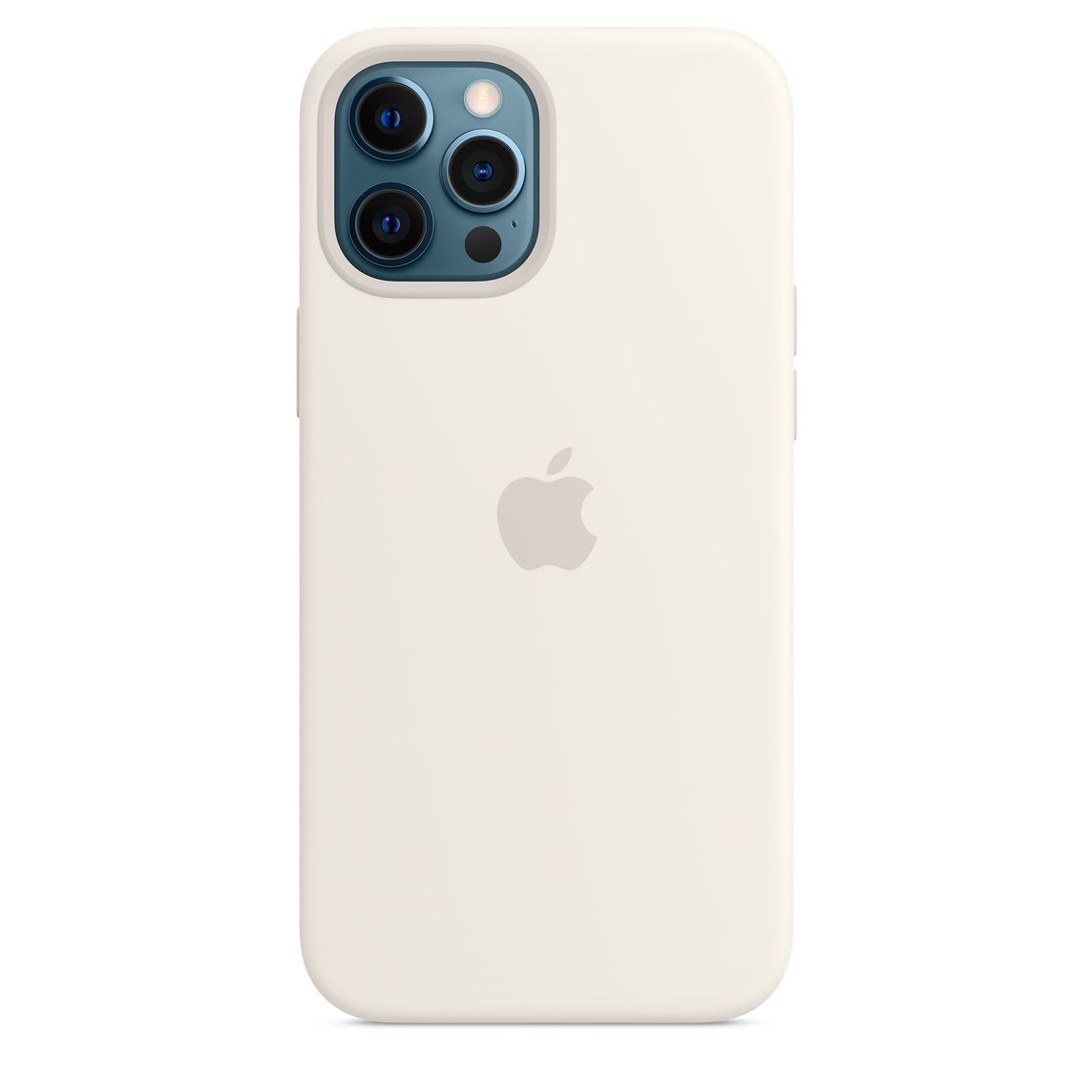 |
| Photo: Apple |
Tim Cook, Apple's CEO, said that the Q2 of 2021 reflects the demand of the products despite the pandemic that affected people around the world.
The iPhone 12 Pro Max and iPhone 11 models were the best-selling ones. Both phones made up 23% of the share of iPhones. The other iPhone 12 models made up 63% of the sales.
The iPhone 12 Pro Max was the biggest iPhone Apple had ever made when it launched and it was easily the best. It was also very expensive at $1,099 / £1,099 / AU$1,849 although it's now a touch trickier to track down as Apple no longer sells it directly.
The design of the 12 Pro Max mirrors that of the other handsets in 2020's iPhone 12 family: there’s a new flat-sided frame, which looks more industrial, and is a little less comfortable to hold than last year's model. It's a whole new look that's actually a bit old, given it debuted in the iPhone 4 a decade ago, but made a comeback in recent iPad Pro models.
While Apple has replaced the iPhone 12 Pro Max in its store with the newest iPhone 13 Pro Max, both phones are the same size, so they share the crown for the company's largest phone. While Apple keeps around older basic models in its lineup, it typically quietly retires the larger versions, meaning you'll be able to find the iPhone 12 Pro Max at other retailers, probably at a discount, but not directly from Apple.
Given how incremental the upgrades are on the iPhone 13 Pro Max, though, we'd still recommend the iPhone 12 Pro Max as a top choice for fans of big Apple phones. The arrival of iOS 15 also adds plenty of new functionality, from improved Apple Maps to more nuanced Messages functionality to watching or listening to media with others via SharePlay.
The iPhone 12 Pro Max is decked out in premium-looking, more muted colors though, and we're fans of the shiny metal rim around the edge (despite the fact that it's a real fingerprint magnet). It gives the big phone a modern and industrial look.
While the iPhone 12 Pro Max is actually only a very small amount bigger than 2019's 11 Pro Max, the bezels around the OLED display have been shrunk to allow Apple to increase the screen size to 6.7 inches – and it's a compelling reason to pick up the new larger iPhone.
Images are clearer and more visible on the larger display, you can see more of a web page or image in daily use – and as a movie-watching machine it's the best iPhone ever. It's one of the best displays on the market, able to render both colorful scenes and more subtle tones with ease.
The 12 Pro Max starts at 128GB of storage, which is the bare minimum we’d expect, as the cameras will fill it up quickly – and with 5G on board you'll be able to download content faster, making it easier to fill up your phone with movies and music too.
If you want the best of all things in an Apple smartphone, the iPhone 12 Pro Max is it. The large and bright display, the enhanced camera, the longer battery life and awesome grunt inside make this a compelling smartphone. If your hands can cope with the extra heft (and your wallet with the heftier price), this is the model to go for.
However, if the Pro Max feels a bit more than you need, or is beyond your budget, the iPhone 12 Pro offers a similar feature set and performance for less (although without the extended battery life) – and the difference between the cameras isn't as marked as we expected.
If you're open to Android then there are also a few other top-flight phones to consider, most notably the Samsung Galaxy S21 Ultra, which at the time of writing tops our list of the best smartphones. You might also want to take a look at the OnePlus 9 Pro, which matches or beats the iPhone 12 Pro Max in many areas while coming in at a slightly lower price.
 Easy Steps To Change Password On iPhone & iPad 2022 Easy Steps To Change Password On iPhone & iPad 2022 Changing the passwords on iPhone and iPad might be confusing at first, but this step by step guide will help you through this and understand ... |
3. Apple iPhone 13
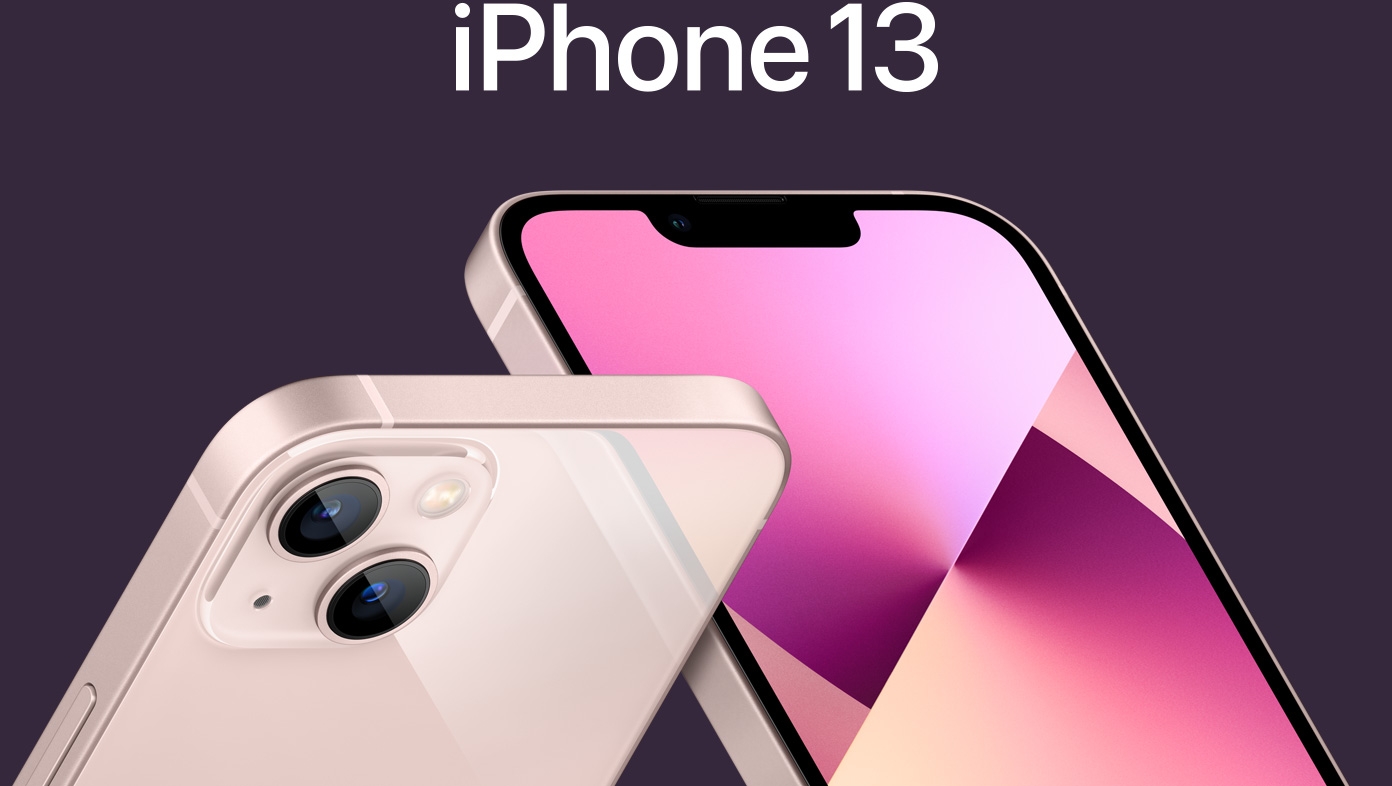 |
| Photo: Apple |
The iPhone 13 is a minor upgrade to last year’s brilliant iPhone 12, with an improved camera, larger storage longer battery life and a small price cut.
Apple’s latest regular-sized smartphone costs £779 ($799 or A$1,349), which is £20 cheaper than its predecessor, and sits between the smaller £679 iPhone 13 mini and the £949 iPhone 13 Pro.
The phone has the same general design as its predecessor. Its flat aluminium sides and hardened glass front and back feel just as robust as last year. It is 12g heavier and ever so slightly thicker, but unless you compare them side by side that is not noticeable.
The screen is crisp, vibrant and a little brighter than last year’s model. It has a refresh rate of 60Hz, which was standard for iPhones but makes it less smooth when scrolling than most Android rivals and this year’s iPhone 13 Pro models with their 120Hz displays.
The iPhone 13 has Apple’s latest A15 Bionic processor, which is slightly faster all-round than last year’s A14 in the iPhone 12, and double the starting storage with 128GB, which will probably be enough for most people. It is one of the fastest phones you can buy.
Battery life is excellent. The phone lasts about 46 hours between charges with the screen used for about five hours in that time including 90 minutes browsing on 5G, which is longer than most similarly sized rivals and last year’s model. That means the phone can just about make it from the morning of day one until the morning of day three if you’re careful, but more likely it’ll need charging every other night.
Apple does not provide an expected lifespan for the iPhone 13’s battery but it can be replaced for £69. Batteries in similar devices typically maintain at least 80% of their original capacity after 500 full charge cycles. The smartphone is generally repairable, with an out-of-warranty screen replacement costing £266.44.
The iPhone 13 uses 98% recycled rare earth metals, 99% recycled tungsten and 35% recycled plastic in various components, plus 100% recycled tin in the solder of its main board and battery management unit. The company breaks down the phone’s environmental impact in its report.
Apple also offers trade-in and free recycling schemes, including for non-Apple products.
There are two improved 12-megapixel cameras on the back, one main and one ultrawide angle; there is no optical zoom.
Both cameras are bigger and let in more light than those on last year’s models, which is most noticeable on the main camera. Photos in good light are detailed, crisp and well balanced even in high contrast scenes. Low light performance is greatly improved, so you need the dedicated night mode far less often while producing sharper and better balanced images. The ultrawide is a little sharper and has better low light performance too, making it more usable indoors.
The new “photographic styles” feature for still shots is great, letting you choose the balance between contrast, vibrancy and tone. Previously Apple typically favoured a warmer look compared with rivals from Google and Samsung, which you can now change beyond simply applying filters.
The iPhone is still leagues ahead on video quality. New for this year is “cinematic mode”, which simulates “rack focus” where film-makers draw your attention to a person or object by switching focus to them when they look towards the camera and blurring the foreground and background. It’s a lot of fun to play with, but I can’t see myself shooting a film with it.
The 12MP selfie camera is the same as on previous iPhones and is starting to show its age. It shoots good, crisp and detailed images in bright light, but struggles a little in dimmer settings such as inside a pub often resulting in softer, blurrier images.
4. Apple iPhone 12 Pro
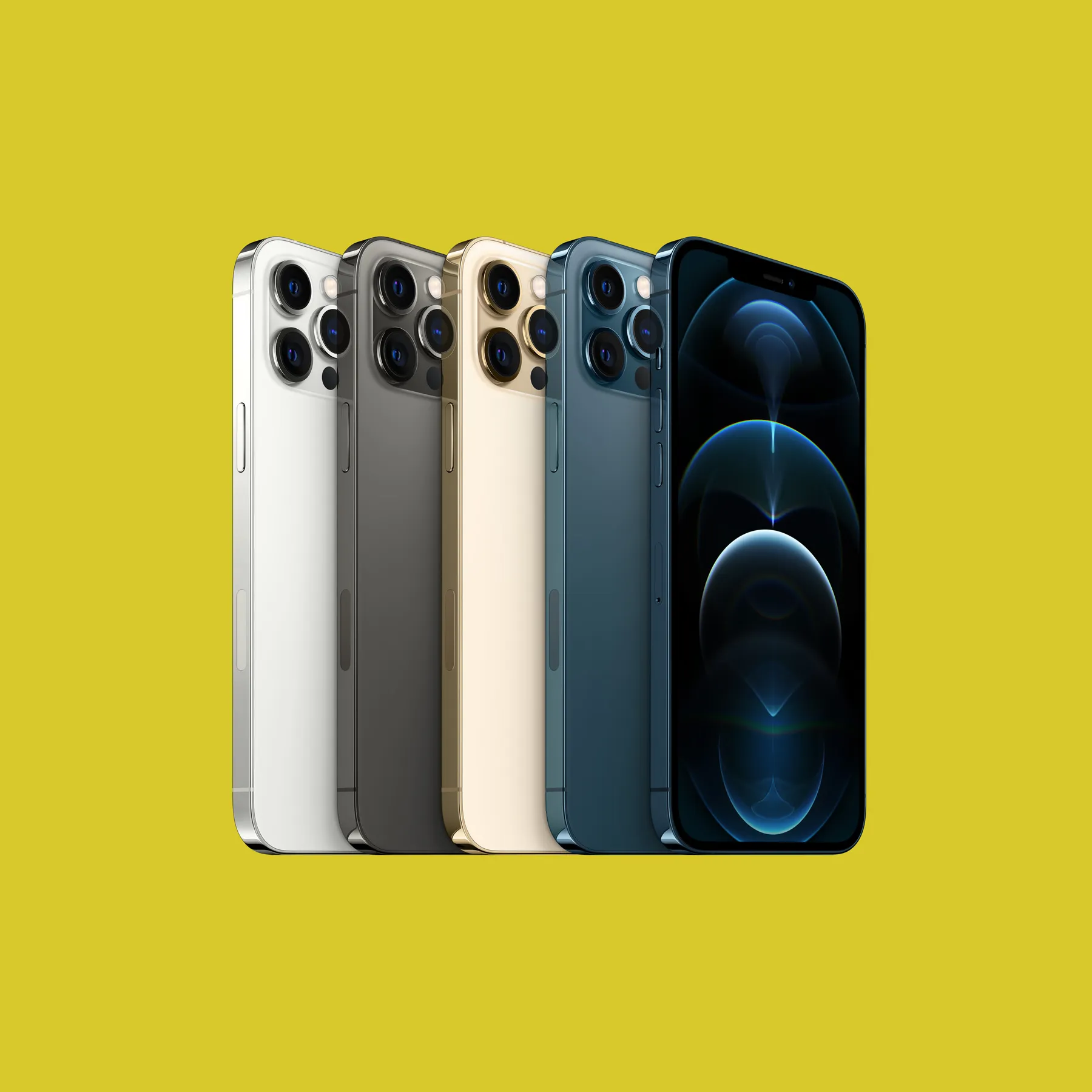 |
| Photo: WIRED |
The iPhone 12 Pro was one of the most feature-rich iPhones you could buy when it launched. It offered some of the greatest features inside and was a tempting proposition for anyone needing more raw power than the iPhone 12.
While it's no longer the best Apple handset you can get now that the iPhone 13 Pro has been released, given how features have been added, you're safe opting for the iPhone 12 Pro instead if you can find it a bit cheaper. Apple has taken the 12 Pro off its official lineup, though, so you'll only be able to buy it at third-party retailers.
Announced alongside the iPhone 12, iPhone 12 mini and iPhone 12 Pro Max, the iPhone 12 Pro's key upgrades over the standard iPhone 12 are subtle: there's slightly more RAM, but the same chipset inside. There are three camera sensors on the rear, not two, so you can now get closer to subjects and scenes with 2x optical zoom.
The addition of LiDAR - that's a new sensor on the rear camera to judge distance - brings more focusing options, and paves the way for more advanced augmented reality features in the future. But otherwise, the Pro is largely the same as the 'standard' iPhone 12 – it has exactly the same size, shape, screen technology and resolution, and debuts 5G and Apple's MagSafe tech on an iPhone too.
The iPhone 12 Pro design is both futuristic and retro at the same time: the 6.1-inch OLED display is clear, bright, and extends further to the edges of the phone, meaning the 12 Pro is actually smaller than the iPhone 11 Pro in the hand.
However, you'll notice instantly that the curved edges are replaced with stark, flat, industrial-looking sides – you lose the feel of the phone nestling into your hand when you pick it up, but it does feel more compact.
5G is an interesting addition this year. Apple clearly knows that it needed to bring the super-fast connectivity standard to the non-Android masses, and by including it in every new iPhone, it's given the still relatively new tech a big shot in the arm.
However, we're struggling to find many places to use it currently, and it's a noticeable drain on battery life – as 5G becomes more prevalent, and cheaper, so will the iPhone 12 Pro become a more useful phone.
Easy Steps to Change Time and Date on iPhone: Automatically and Manually
5. Apple iPhone 11
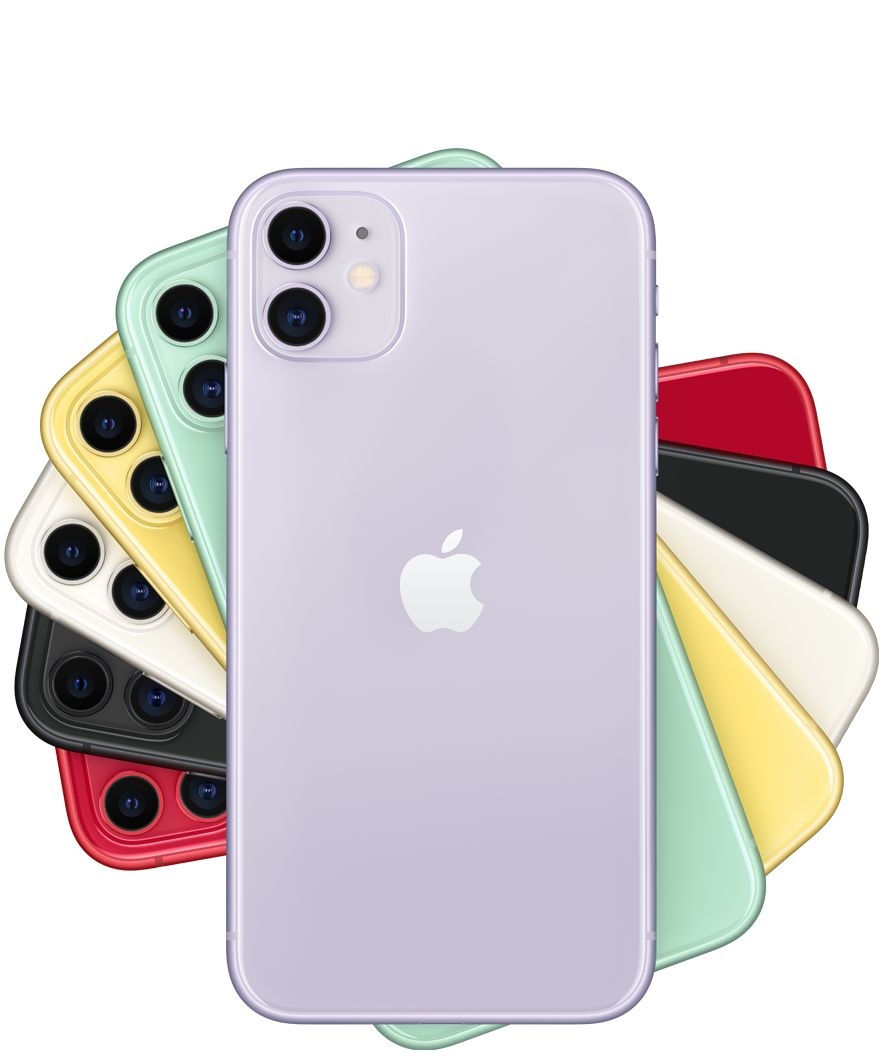 |
| Photo: Apple |
The iPhone 11 was a big surprise, packing more advanced technology (namely in the camera capabilities and the processing power under the hood) at a lower cost than the iPhone XR's price in 2018. It combines a large 6.1-inch display with a premium-feeling body, and comes in an array of colors too.
It's worth noting that the iPhone 11 isn't Apple's newest smartphone – that's the iPhone 13, which launched in September 2021 alongside the tiny iPhone 13 mini, the iPhone 13 Pro, and the bigger iPhone 13 Pro Max. It didn't improve much on the iPhone 12 range that released in 2020, but they're still the most powerful Apple phones on the market.
Despite launching in 2019, the newer smartphones are pretty similar in terms of design but have improved camera sensors, a newer chipset and flat, not curved, edges – and they're 5G capable. They're significant upgrades in some ways, but the iPhone 11 is still worth considering, especially with significant discounts since it launched.
The most eye-catching feature of the iPhone 11 is its imaging capabilities: with two sensors on the rear, you can now take wider-angle snaps alongside the ‘normal’ main images. These sensors are 12MP each, and are raised from the rear of the phone in a square glass enclosure - which we’re not enamored with visually.
The night mode is the most impressive part of the iPhone 11's imaging quality, bringing brightness and clarity to impossibly dark scenes, and the Portrait mode, defocusing the background, is improved on the new iPhone too.
The phone has lost some of the spotlight now that the iPhone 12 line is available. But not being the newest iPhone on the block likely means significant discounts on the iPhone 11.
The design hasn’t been updated much from the iPhone XR in 2018, although there are now six colors – including a new lilac and mint green shade - to choose from. The edges of the iPhone 11 still have the same feel as the older iPhone 6, 7 and 8, although the larger 6.1-inch display in the middle takes up most of the front of the phone (although with slightly thick borders around the screen).
That display is bright enough and responds well under the finger, with bright sunlight performance good and the overall movie and video streaming playback strong - although not in the same league as the OLED-toting iPhone 11 Pro range, let alone the iPhone 12 range.
Apple claims that the battery life of the iPhone 11 is an hour longer than that of the impressive iPhone XR, and in our tests this largely bore out. We were able to eke 24 hours’ use out of it without needing to try too hard - although sadly there’s no fast charger in the box, so if you do deplete the power pack you’ll need to wait around three hours before it’s fully juiced up.
The overall speed and performance of the iPhone 11 is robust - and especially so for the price. It’s still one of the most powerful phones out there, according to our early benchmarks.
In reality that just translates to a solid experience when flipping in and out of apps - although we did note that the speed in firing up the camera was a little slow, and processing pictures took longer than expected for a modern phone.
That said, given you can edit 4K footage at 60 frames per second on a smartphone, it seems like a pretty powerful device to have in your pocket - especially if you’re a social influencer.
6. Samsung Galaxy A12
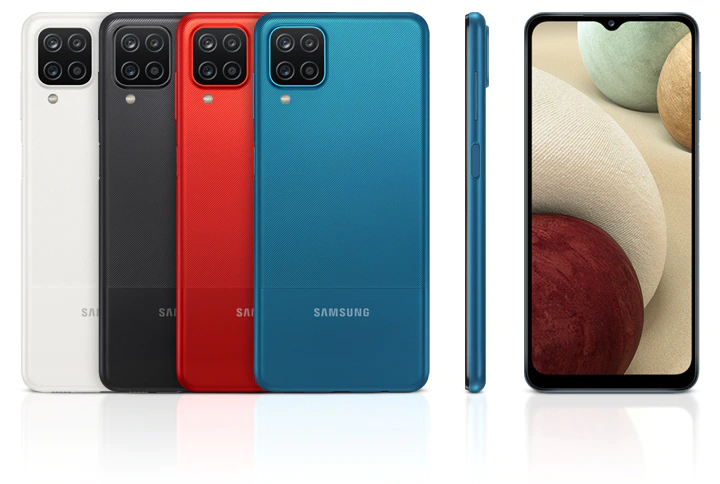 |
| Photo: Samsung |
Samsung introduced its Galaxy A12 as a direct successor to the Galaxy A11 in November 2020 before bringing it to the US in April 2021. The Galaxy A12 offers a total of six different configurations, starting with as little as 2GB of RAM and 32GB of storage. However, only three are readily available in the United States right now (listed above). No matter which way you go, you’ll also have access to four color options — red, blue, black, and white.
Our Samsung Galaxy A12 arrived with Android 10 on board, though the Android 11 update with Samsung’s One UI 3.1 is available via OTA. It also ran the July 1, 2021 Android security patch at the time of testing. It should receive two years of software updates as well as four total years of security patches, which will carry the Galaxy A12 through late 2024 or early 2025.
Once you move past the software, you’ll find the MediaTek Helio P35 SoC powering away on Samsung’s entry-level device. The RAM and storage options top out at 6GB and 128GB, respectively, and you can go even further with the microSD slot. A 5,000mAh battery and a 6.5-inch HD+ panel tie everything together, and the display comes complete with an Infinity-V notch. In India, there is a variant that swaps out for Helio P35 for Samsung’s own Exynos 850 chipset.
Samsung dropped its wired earbuds from the packaging this time around, though it still offers a charging block and USB-C cable. You get a SIM ejector tool and a basic startup guide as well, in case you need some assistance getting off the ground.
The Galaxy A12 fits comfortably into the sub-$200 price bracket, but there are plenty of other phones to consider. Motorola’s Moto G Play and Moto G Power are leading names in the segment, and the OnePlus Nord N200 offers a little more punch if you can shell out the $240. Samsung’s own Galaxy A32 5G is a good option as well, though it’s more expensive still at $279.
Top 20+ Best Apps to Watch Football for Free on iPhone & Android
7. Xiaomi Redmi 9A
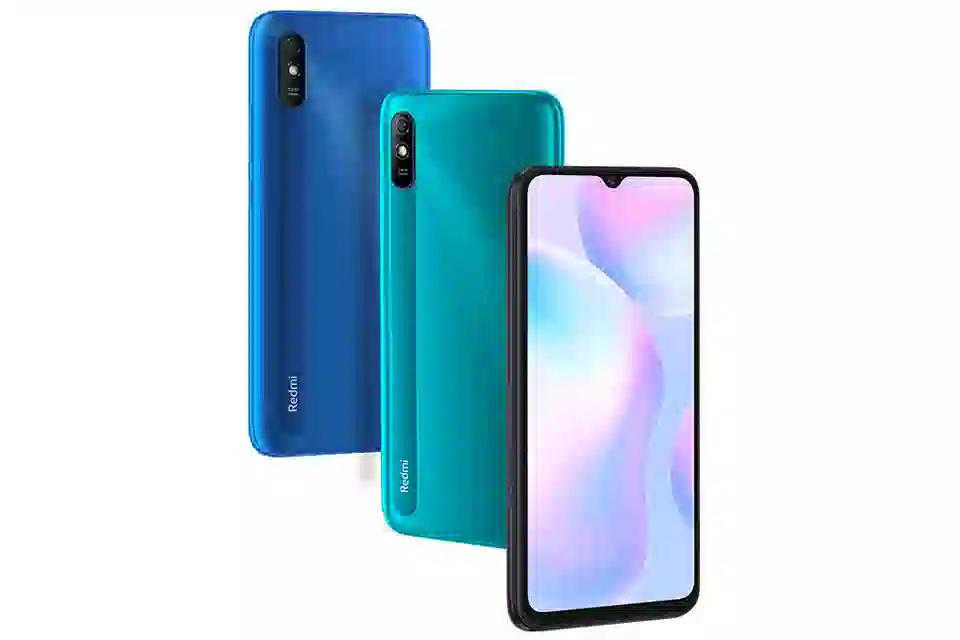 |
| Photo: FPT Shop |
The Xiaomi Redmi 9A is an Android smartphone developed by Xiaomi Inc in 2020. It’s a low-budget phone, but it received generally good reviews from critics. This phone comes with three different color options: Carbon Gray (Midnight Black), Sky Blue (Sea Blue), Ocean Green (Nature Green).
It contains up to 128 GB of internal storage and 6 GB RAM. Xiaomi Redmi 9A includes a 5000 mAh battery with permanent adhesive, making repair and replacement a bit difficult. It supports 10W charging.
It features a 6.53-inch LCD IPD display and a plastic frame. Additional features include accelerometer, proxy, and A-GPS.
Specifications
Release date: June 2020
Dimensions: 164.9 x 77.1 x 9 mm (6.49 x 3.04 x 0.35 in)
Weight: 196 g (6.91 oz)
Display:
- IPS LCD, 400 nits (typ)
- 6.53 inches, 102.9 cm2 (~81.0% screen-to-body ratio)
- 720 x 1600 pixels (~269 ppi density)
Operating System: Android 10, MIUI 12
- Processor: MediaTek MT6762G Helio G25 (12 nm)
- Chipset: Octa-core (4x2.0 GHz Cortex-A53 & 4x1.5 GHz Cortex-A53)
RAM and Storage: 32GB/2GB RAM, 32GB/3GB RAM, 64GB/4GB RAM, 128GB/4GB RAM, 128GB/6GB RAM
Cameras:
- Rear-facing cameras: 13 MP, f/2.2, 28mm (wide), 1.0µm, PDAF
- Front-facing camera: 5 MP, f/2.2, (wide), 1.12µm
Battery:
- Li-Po 5000 mAh
- Charging 10W
Sensors:
- Accelerometer
- Proximity
- A-GPS
Wireless Connectivity:
- Wi-Fi 802.11 b/g/n
- Bluetooth 5.0
- microUSB-B 2.0
8. Apple iPhone SE 2020
The iPhone SE 2020 was built around one goal: to launch an iPhone for less money than ever, and it achieved that well. For just $399 / £389 / AU$679 you can have a brand-new handset from Apple – it’s one of the best iPhones ever created and you can pick one up for less than half the price of a new flagship phone.
The design of the phone is going to be familiar to anyone that’s used an iPhone recently – unless you’ve not held a handset from Apple since 2013, you’ll have seen this 4.7-inch frame before, complete with bezels top and bottom and a home button with a fingerprint scanner built in.
This isn't the newest smartphone from Apple - that's the iPhone 13 series, including that phone, the iPhone 13 mini, iPhone 13 Pro and iPhone 13 Pro Max. You can find reviews for each of them by clicking the linked names, but they're all pricier and more premium devices than the SE.
The iPhone SE (2020) is seen as the ‘smaller’ iPhone form factor given the all-screen designs of the more recent models, and it’s both more lightweight and pocketable than any other modern Apple phone besides the iPhone 12 mini and iPhone 13 mini, which are marginally smaller (despite packing in a larger screen), but also pricier than a mid-range phone.
The SE is pleasingly water resistant, but does have some drawbacks: it lacks a headphone jack at the bottom, and because the display technology is slightly dated (as it comes from the iPhone 8) it can suffer in bright light when you’re trying to watch videos or the like.
Apple might have stuck with the same design as the iPhone 8, but the innards are much improved – notably the new A13 Bionic chipset inside, which adds speed nearly everywhere and really does improve the performance over the older 4.7-inch models. It’s not quite at the level of the iPhone 12 range, but it’s not far off – and getting the recent silicon means the iPhone SE has years of iOS updates head of it.
9. Apple iPhone 13 Pro Max
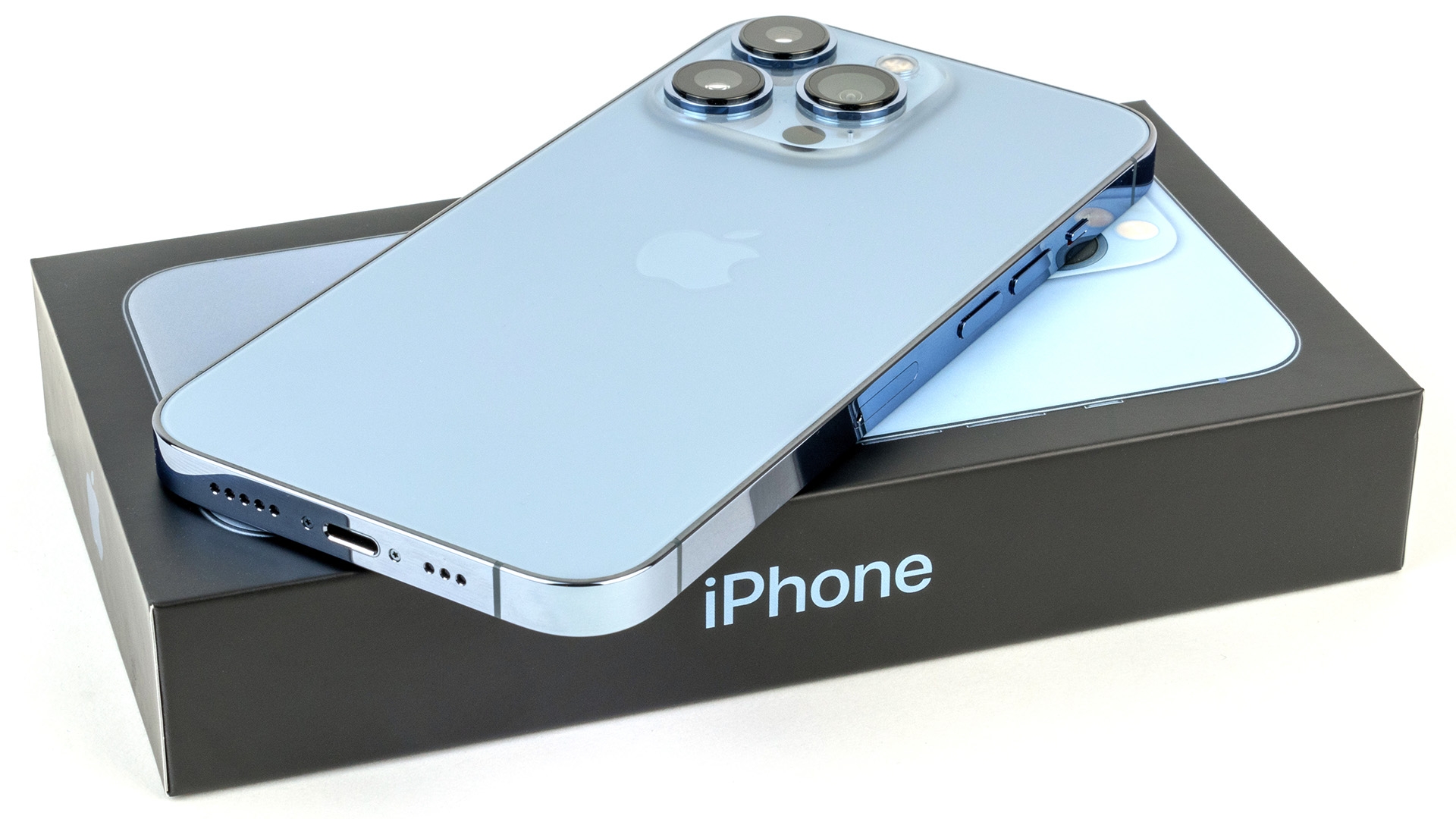 |
| Photo: NotebookCheck |
The iPhone 13 Pro Max represents basically you could ever want in a smartphone. This premium flagship (from $1,099) packs a 120Hz refresh rate display, the fastest performance of any handset and epic battery life.
But it’s the iPhone 13 Pro Max's cameras that put this phone over the top, as they're the best I've tested on a phone so far. You can shoot Cinematic mode videos with a compelling bokeh effect, choose your own Photographic styles and take super close-up shots with a new macro mode that leverages the ultra-wide camera.
The iPhone 13 Pro Max is available to buy right now, starting at $1,099 for 128GB of storage. Going up to 256GB costs $1,199, 512GB is $1,399 and the whopping 1TB option is priced at a gulp-inducing $1,599.
On the other side of the Atlantic in the U.K., the 128GB iPhone 13 Pro Max starts at £1,049, hitting £1,149 for the 265GB model and £1,349 for the 512GB version. If you have plenty of money to burn and want a lot of storage, then the 1TB iPhone 13 Pro will cost a wallet-walloping £1,549.
The biggest upgrade to the iPhone 13 Pro Max’s display — and biggest upgrade overall — is the new ProMotion display. This 6.7-inch panel can dynamically scale its refresh rate from 10Hz to 120Hz, which results in smoother overall performance and animations.
These benefits carry over to other activities as well, such as swiping between apps or returning to the home screen. But I’m more excited by apps that take advantage of ProMotion. This includes Catalyst Black, a frenetic online battle game that had me shooting in all directions and transforming into monsters. And the whole experience was wonderfully fluid.
The iPhone 13 Pro Max and iPhone 13 Max initially had an issue where certain apps did not support 120Hz, but the iOS 15.4 update enables 120Hz refresh rate for third-party apps.
Another plus for the iPhone 13 Pro Max’s screen is its increased brightness. We measured an average of 837 nits with the Adaptive setting off and 1,038 nits with with Adaptive on. The iPhone 12 Pro Max averaged 654 nits with Adaptive off. The Galaxy S21 Ultra maxes out at 821 nits.
The iPhone 13 Pro Max’s display delivers stunning detail even in low-light scenes. When watching the trailer for James Bond No Time to Die, I could make out every creepy crevice in Rami Malek’s transformed face.
The iPhone 13 Pro Max has a bigger camera array for a reason. The main wide camera is Apple’s largest yet at 1.9μm pixels (up from 1.7μm) while offering a f/1.5 aperture, which is rated to deliver a 49% more light thant the iPhone 12 Pro Max. And the ultrawide camera offers a larger f/1.8 aperture (was f/2.4 for iPhone 13 Pro Max) for brighter pics while offering a wider field of view.
10. Xiaomi Redmi 9
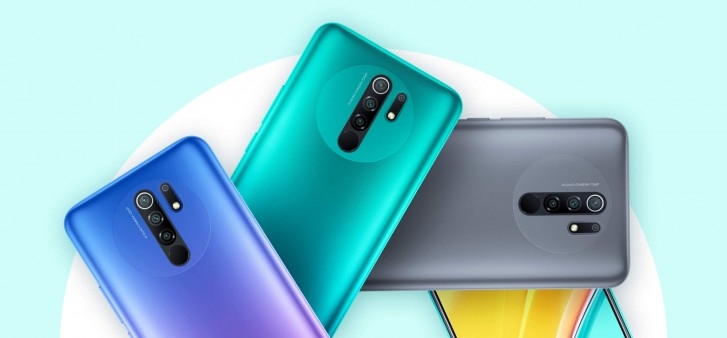 |
| Photo: GSMArena |
With the Xiaomi Redmi 9 we find ourselves most definitely down at the budget end of Xiaomi's smartphone offerings, and like any phone at this price, it's all about how much you're paying (or rather saving) – everything else should be weighed up against that price.
Bear in mind that buying a budget phone isn't the disaster that it once was. Smartphone tech has now evolved to the point where even the cheapest handsets can just about do a job, with performance and features that are going to satisfy the majority of users.
And so it is with the Redmi 9 – while it obviously lags behind the mid-rangers and flagships of this world in just about every category, it's also very affordable, and at this sort of price you do start to wonder whether you do really need a fancy night mode for the camera.
The Xiaomi Redmi 9 is available now to buy in the UK at retailers including Amazon. Check the widgets on this page for the latest pricing and the best deals on the web, but at the time of writing you can pick up the phone for around £170 without a contract and SIM-free. It's also available direct from Xiaomi.
These days most budget phones tend to pack in multiple cameras and fancy software features to make up for the fact that they're not actually that good – and in that vein the Redmi 9 comes with a quad-lens 13MP wide + 8MP ultrawide + 5MP macro + 2MP depth rear camera. Despite all of those different cameras, you're not going to get results that match up to the mid-rangers that cost a little bit more.
Most shots come out looking fine though, especially in good lighting. The focus and shutter speed is a little slow, but we were happy with most of the pictures we took in the great outdoors, and an ultrawide lens is always welcome. The 8MP selfie camera on the front is okay too, provided you're just taking photos for social media and your family's chat group rather than for photo canvases that are going to go up in the living room.
Low light performance isn't great, though the Redmi 9 will make an effort at trying to get something usable out of dark scenes. Details get lost and noise creeps in, and if night time shots are going to be important to you then maybe save up for a bit longer to get something more capable in this department than the Redmi 9.
Battery life is good, on the whole – we tended to have plenty of juice left in the tank at the end of the day, and if you're careful you might get two days between charges. Our two-hour video streaming test at maximum screen brightness knocked the battery level down from 100 percent to 83 percent, which equals an impressive 11 or 12 hours of video streaming before the battery will give out completely. The larger-than-normal capacity of 5,020 mAh no doubt helps here.
 Who Is Samantha Samsung - The Virtual Assistant Taking Over The Internet Who Is Samantha Samsung - The Virtual Assistant Taking Over The Internet Recently, the Internet has gone crazy with the new 3D's virtual assistant of Samsung, Samantha Samsung. Who is she and what is special about her? ... |

